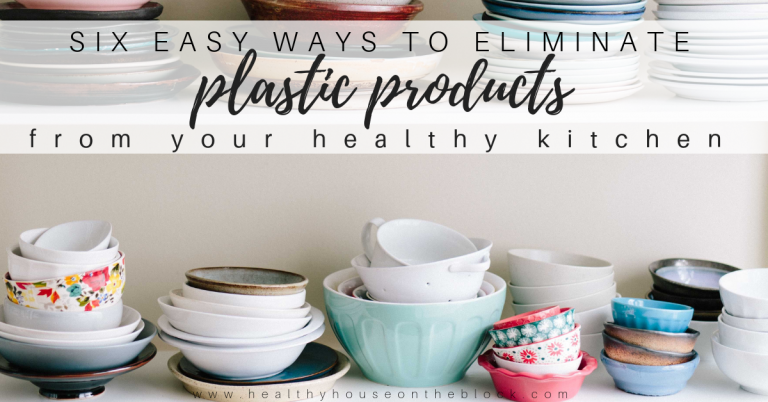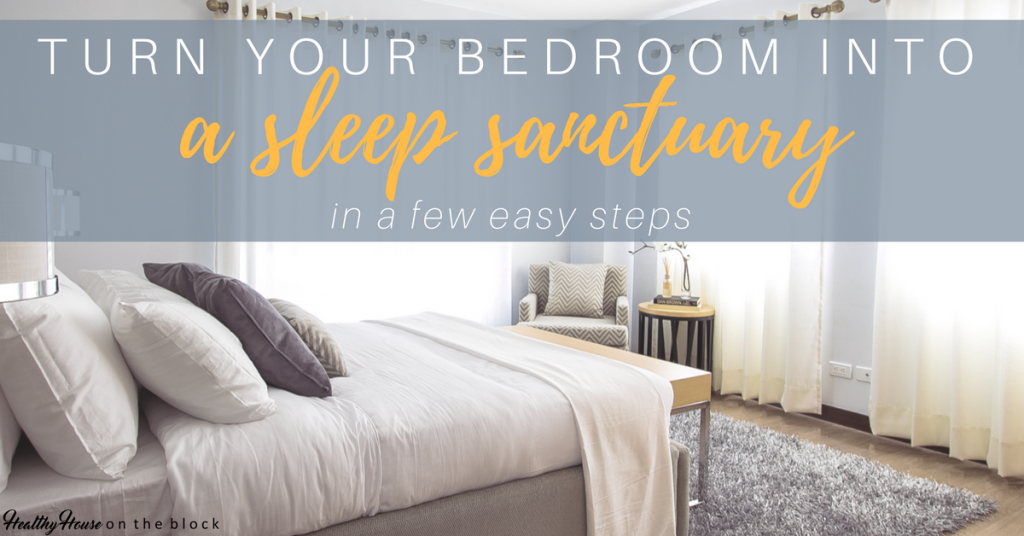
As consumers and homeowners, most of us know how to shop. But are we really shopping the right way, with our health in mind? Often the first factors when purchasing anything for our home or lifestyle is the cost and the convenience. Unfortunately these two components have made for some very unhealthy products and normal purchases for us and our homes.
Manufacturers have tailored their products to meet our demands of inexpensive and convenient. Products made with man-made, synthetic materials and preservatives to ensure a long shelf life line our store aisles. Sometimes we are in such a rush that we don’t hesitate or think twice about what we’re buying.
But what if you had a knowledge and habit of shopping with health in mind? Some of those purchases that are automatic and thoughtless could migrate over to be a healthy purchase for your home and health with that same automatic, no-brainer mentality.
This will kick off a four-week series here at Healthy House on the Block to help teach homeowners and consumers just HOW to shop with the health of their home in mind. Just like our society has shifted in various ways to grocery shop and eat with our health in the forefront of our minds, the time has come to begin the same approach with our homes.
In this series we’ll cover home products, home furniture, cleaning solutions and home remodels. I’m so excited to share with you some of the simple ways you can shift your thinking and your shopping to aid the environment at home.
HOME PRODUCTS
I am one of those people who LOVES shopping for home products. Like I mean fun to me is walking up and down aisles at Ikea and HomeGoods and dreaming about just how amazing my house would look if I had the 999 products in their mock room. I’m not kidding when I say this. Have you ever looked at the sheer amount of items they have in these rooms? It’s insanity. First, I have kids, so most of it would end up broken or used as some sort of inventive toy. Second, when I needed a clean surface for functionality, where would I put all of these beautiful items? Could I even store these when they’re not in season? Probably not.
But still I love seeing these rooms and the detail and layers of textiles they use. It’s beautiful. Over the years I’ve changed my approach to purchasing home goods and products to really only purchase something that I’ve been wanting for a while. I also like to do a smidgen of research before I buy anything that’s a large purchase to see what typical pricing is and if there are any good places to get it online.
I’m more of an in-person purchaser and and I really like to be able to feel and see something that will go in my home before I purchase it. My goal with just about ANY shopping is to avoid impulse purchases. I actually keep a Google Keep checklist of home items I want to purchase in the near future. This way if I see a good deal and the item meets my criteria for material and health, I have no guilt in purchasing it. This being said, I also have a few stipulations I try to follow before I buy these items. And that’s what I’ll outline for you in this post.
MINIMALIST APPROACH
Maybe I’ve watched a few too many episodes of the horrors of hoarding, or maybe I just don’t like cleaning. Either way I try to keep my home product purchases to a minimum. Now I don’t have a bare home with no decor, but I do limit what I put on my shelves and what is displayed in my home. I like to use things that have special meaning to me or that I absolutely love rather than just a thoughtless purchase from Target.
The minimalist approach to home product shopping means your purchases are extremely intentional. There’s no purchase that you haven’t carefully considered or researched. Obviously you don’t have to do this with every purchase, and neither do I. But I do like to attempt to this philosophy with my purchases.
In fact, I wrote an entire blog post on the Changing the Health of Your Home with a Minimalist Approach. This is where a list of things you may want to purchase in the future comes in handy. If it’s not on the list, it doesn’t get purchased. I’ve also found this approach helps me save money with less impulsive purchases.
The idea of less stuff around your house has multiple benefits. Fewer home products means there are fewer places for dust to settle and become problematic. Dust in our homes often contains bacteria, viruses, pesticeds and other allergens. Keeping the amount of dust down in your home will help keep these problems at bay. Pillows, upholstered furniture and items on shelves all collect dust throughout time. Hard surfaces can easily be wiped off, but fabrics can quickly become homes to dustmites, which can be an extremely irritating problem to many adults and children.
The second way fewer home products can benefit is that there are less toxins and VOCs being released into the air due to fewer items. The less you have, the less you introduce into your home. This is where making sure your home has healthy and safe products can be extremely helpful and beneficial.
And let’s be honest, isn’t a decluttered home a more soothing environment? A bright, clean space with fewer distractions is also better for our minds and for our kids’ minds. This is why purchasing items that can double as storage can help to keep clutter and stuff out of the open.
SAY NO TO PLASTIC
Just say no to plastic. Plastic, while widely used, is a huge way we introduce chemicals and toxins into our home. Plastics, especially soft plastics are made with petroleum products and hormone disrupting chemicals. Plastics in the kitchen are probably the number one offender as they get heated and eaten off of, but any place you can avoid plastics is a way you can make your home healthier.
This may be an especially tricky problem if you have young kids. I know when my kids were babies it seemed like everything that was purchased for them was made of plastic. Plastic toys and plastic items should be avoided if at all possible. Opt for materials like hardwood, metal or fabric before going for plastic.
Not to mention the quality of something plastic just isn’t the same as a natural material. You can visit my Healthy Home Products Page to help you find some great non-plastic alternatives.
FABRICS & TEXTILES
Pillows, drapes, throws and other fabrics are so appealing to purchase for the home. But did you know that many of the fabrics we purchase in the form of home products have formaldehyde embedded into the fibers? This helps the fabrics remain wrinkle free and preserves them.
Many fabrics and textiles often have perfluorochemicals in them to prevent spills and stains. Perfluorochemicals are the same components in teflon cookware and the same component responsible for contaminating drinking water in the Midwest. This chemical is dangerous to humans and is a known carcinogenic. Yet, manufacturers continue to embed it into their products with the promise of fewer stains
This is where you either need to do diligent research or look for particular terms and certifications when you’re shopping:
- 100% Organic Materials
- GOTS Certified
- The Organic Content Standard (OCS)
- Oeko-Tex Standard 100
Anything that simply states “sustainable” or “organic” doesn’t mean it necessarily is and requires a bit more research.
BED & BATH
The products we sleep on make a huge difference in the health of our bodies. Our bodies produce heat and moisture while we sleep, which means any toxin in the bedding we use is released at a much quicker rate than a decorative pillow or throw blanket on our couch. Our bedding is also where we land for 8-10 hours a night (if you’re lucky!) and our bodies are in their most vulnerable state.
You may be wondering what types of toxins could possible be in your sheets. Unfortunately the same harmful chemicals in home textiles are also in sheets and bedding. Formaldehyde and perfluorochemicals are embedded into the fabrics to maintain the wrinkle-free appearance and prevent staining. Unfortunately these chemicals do not wash out and are in the fabrics for the long haul. You can wash current sheets in baking soda to neutralize the chemicals in it, but essentially they never go away. But when you go to purchase new sheets and bedding, shop with your health in mind. Make sure your buying something 100% organic that’s certified by a third party as healthy and safe. Often times it’s easier to find this online rather than perusing through store aisles.
The same is true of your towels in the bathroom. Towels are often warm and humid from the bathroom environment, which can actually release toxins at a higher rate into the air. Looking for the same promise of 100% organic and certification by a third party can help you keep the bathroom environment healthy.
You can read more on how to create a healthy sleep environment and healthy bathroom in these blog posts.
A HEALTHY KITCHEN
Home products that are purchased for the kitchen should be purchased with care and consideration for our health as this is often times a product that we end up eating off of. Our dishes, glasses and serving-ware is what we eat off of and drink off of, meaning if there are toxins in the product, they have a one way ticket to our bloodstream.
Avoiding plastic everyplace you can in the kitchen is a great way to rid your home of toxins. This blog post covers six areas you can really help your home by switching plastic for natural and safe alternatives.
Keeping materials in the kitchen to glass, wood, stainless steel and ceramic with a non-VOC finish is optimal. You’ll be doing your family a huge favor by limiting the use of plastic, melamine and lead coated antique ceramic and porcelain.
The MightyNest has so many great options when it comes to healthy options in the kitchen. And they have a lot of great options for kids dishes and drinkware in non-plastic materials. It’s a great place to research your products and plan out purchases before buying.













